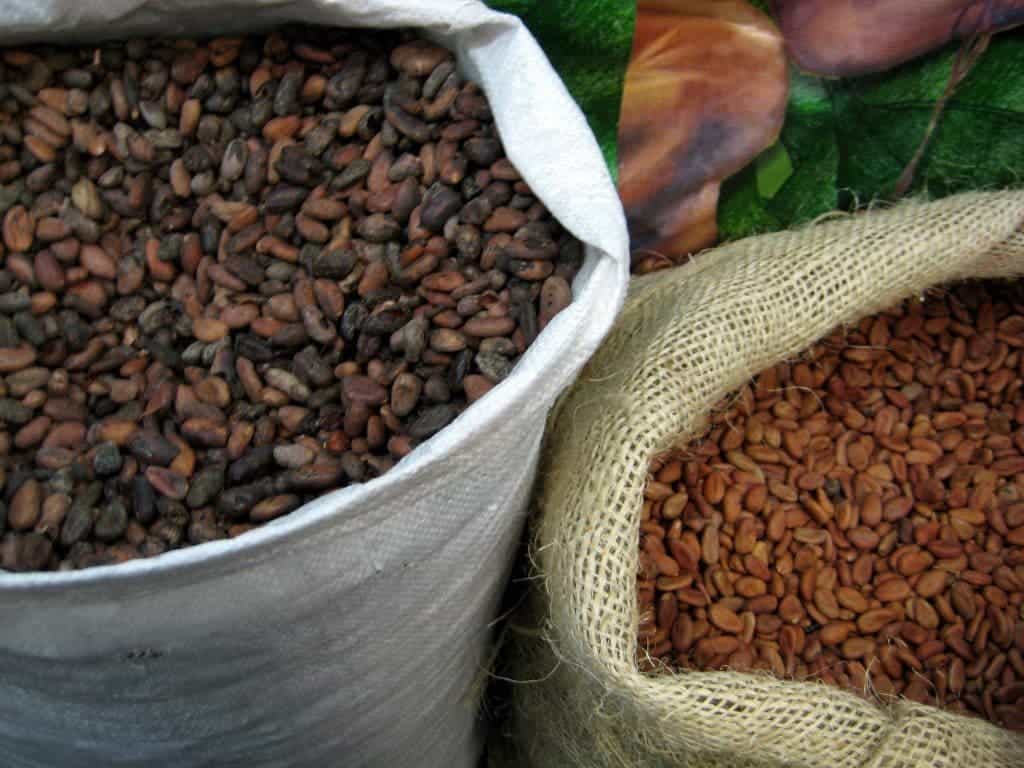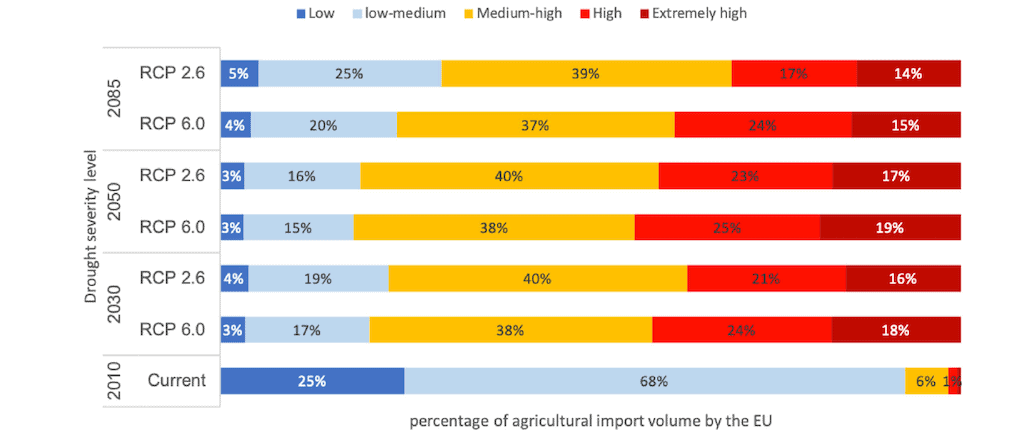From coffee to chocolate, at least 40% of the European Union’s (EU) agricultural imports will be “highly vulnerable” to drought by 2050, according to a new study. This is because many of the countries in which the EU relies for its food imports will be severely affected by climate change if adaption measures aren’t implemented.

The research found that 35% of the locations from which the EU imports agricultural will be affected by severe droughts by 2050. While the risk would be reduced by adapting to climate change, most food the EU imports comes from countries with a limited funding to take any measures, such as cocoa from the Ivory Coast and Ghana.
“Climate change impacts are not just happening within your borders,” Ertug Ercin, lead researcher, told The Guardian. “The study gives evidence of how we are interconnected globally through trade and how climate-driven disasters outside our borders can touch our lives directly and can be really relevant to our society and economy. We cannot just ignore it any more.”
Due to climate change, Europe has seen an increase in heatwaves and unprecedented drought conditions in recent years, disrupting its own agricultural production. But its vulnerability to extreme weather and climate change goes beyond its borders. Many of its economic sectors and food consumption use raw materials sourced from all around the world — and those impacts have been less explored.
The researchers focused on eight crops, including cocoa, coffee and cane, that need significant amounts of rainfall to grow and are frequently imported to the EU. They determined how drought will change under a low emission scenario (RCP2.6) and an intermediate emission scenario (RCP6.0), consistent with current climate policies.
The graph below shows the percentage of food imports to the EU grown in regions of different drought severity. The researchers compared drought severity from 2010 with projected severity in 2030, 2050 and 2085 under the two emission scenarios. In the RCP6.0 scenario, only 18% of the imports will come from countries with low drought severity by 2050.

Trouble on the horizon
The EU now accounts for a third of global coffee consumption, the researchers explained. The export market is dominated by Brazil and Vietnam, which together provide half of Europe’s coffee imports – which the study showed will be significantly affected by increased droughts in the near future because of climate change.
Up to 44% of the coffee imports’ supply locations will be highly vulnerable to drought due to climate change, the study found. Meanwhile, only 28% of the coffee imports’ vulnerability will be less compared to the current climatic conditions. Supplies from Brazil, Vietnam and Indonesia will be affected, while those from Colombia and Uganda will be less vulnerable.
The EU is also a key region for the cocoa sector, accounting for more than half of global cocoa bean imports. Most are supplied from developing countries, mainly in West Africa. The study found that around 28% of the cocoa imports will be originating from high to very highly vulnerable locations to drought in 2050 under the RCP6.0 scenario.
The researchers found that there will be larger drought vulnerability levels for supplies of cocoa beans from Indonesia and from Malaysia in the coming years. The Ivory Coast and Ghana will have a lower vulnerability, while Peru, Colombia, Uganda and Gabon will benefit from climate change and be less vulnerable to drought in 2050.
Other commodities will also experience challenges. The EU produces only about 3% of the soybeans it uses, but 60% of soybean imports will come from places with a high vulnerability to drought by about 2050 in the RCP6.0 scenario. At the same time, 61% of the palm oil imports will be highly vulnerable to drought, especially from Indonesia.
For the researchers, the findings show that immediate action is needed to prevent the possible negative impacts. They argue adaptation is necessary “at all levels of decision making” and ask to consider options on a case-by-case-basis, such as sourcing from other regions, investing in new market areas and supporting regions with efforts to reduce their vulnerability.
The study was published in the journal Nature Communications.






